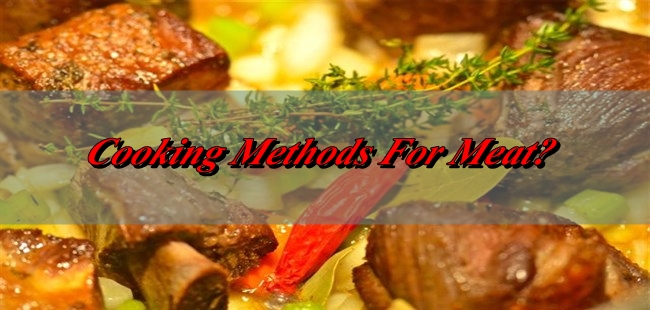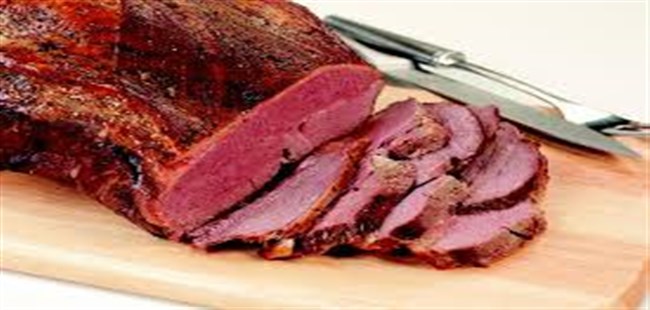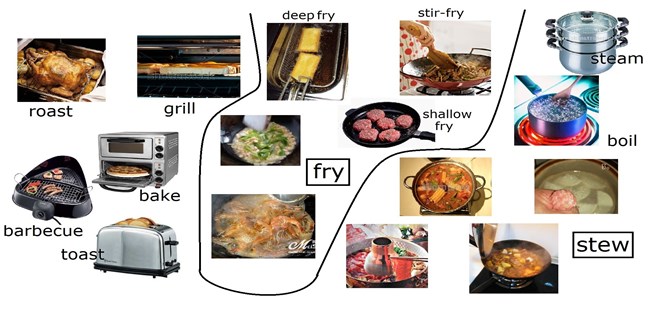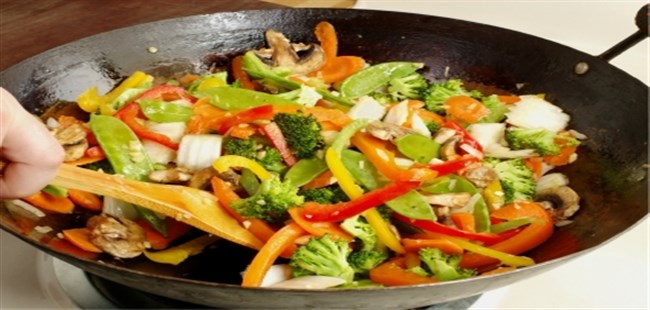When Choosing A Cooking Method For Meat Or Poultry;
If you use the appropriate cooking method, it is possible to make even the toughest cuts of meat and poultry tender and succulent.
Flavoring Meat and Poultry?
Even for everyday meals, it is worth making In many cases, an accompaniment that adds the most of meat dishes by adding extra flavors, such as stuffing or a sauce served with flavor with coatings, glazes, or tasty stuffings, roast meat, helps make the meat go further.
Using Coatings
• Sprinkling with spices Brush poultry skin with oil and sprinkle with curry spices to give a rich, spicy, crisp skin.
• Making a glaze Mix equal quantities of Worcestershire sauce and tomato paste to make a spicy glaze. Brush the mixture over beef, lamb steaks, chops, or chicken pieces before grilling.
• Coating with crumbs Tosses fresh bread crumbs in olive oil. Add plenty of chopped fresh herbs, and cover the meat skin with the mixture for the last 30 minutes of roasting.
Flavoring Chicken
To add flavor and keep a whole chicken moist during roasting, gently lift the breast skin, and tuck slices of lemon or orange underneath. Brush with oil, season, and place in a hot oven. Use unwaxed lemons if possible.
Adding Stuffing
• Using mango To give an exotic flavor to a whole turkey or chicken, and to moisten the flesh, tuck pieces of diced mango into the neck end. The fruit will cook to a purée, sweetening the poultry juices.
• Flavoring packaged stuffing Mix a few chopped nuts, some dried fruits, or grated Parmesan cheese into the packaged stuffing to add flavor. 3 Serving separately Press extra stuffing into oiled ramekins, bake for the last 20-25 minutes of roasting, and serve with the meat.
Flavoring Ham
Studding with cloves To give a spicy flavor and an attractive finish to roast ham, score the fat surface, and press a clove into each cut.
Glazing With Mustard
For a quick, delicious glaze for roast ham or pork, mix equal amounts of powdered mustard and brown sugar. Sprinkle the mixture over the flat surface for the final 30 minutes of cooking.
Flavoring Pork
Adding herbs Before tying up a roast of boned pork for cooking, tuck a handful of fresh sage leaves inside it for a rich flavor. Roast as usual.
Stuffing A Pork Chop
To add a special taste to a plain pork chop, cut small slits along the fat edge, and open them out to make pockets. Tuck dried apricots or prunes inside, then grill, fry, or bake the chop.
Flavoring Red Meat
• Adding garlic To flavor lamb, cut deep slits in the surface with a knife, and tuck a sliver of garlic into each slit. This will infuse a subtle flavor to the meat as it cooks.
• Marinating meat Immerse lamb or beef steaks in a marinade of olive oil, garlic, red or white wine, and herbs. Keep in the refrigerator for 2-3 days, then grill lightly.
• Spreading with juniper For a rich flavor, crush juniper berries to a paste with a little red wine. Spread over the surface of venison steaks or roasts before cooking.
• Drawing out flavor Season meat with salt just before cooking, since salt draws out the juices from the meat.
Stewing Meat And Poultry
Stewing is a slow, gentle cooking method, usually in a covered pan, and with cooking liquids partially covering the food. This method is especially suitable for tough cuts of meat, such as beef shanks which can become tender and juicy after long cooking in a stew.
Thickening Stews
It is best to thicken at the end of cooking since thickened stews tend to stick and burn during cooking. If a stew contains too much liquid, reduce or thicken it by one of the following methods.
• Reducing liquid Reduce liquid by boiling it rapidly without a lid until the correct consistency is reached.
• Using cornstarch Blend, some cornstarch with enough stock, water, or wine to make a thin paste, then stir it into the hot juices. Bring to a boil, and stir for two minutes. Adding bread crumbs To thicken stews and casseroles quickly, stir in a few spoonfuls of fresh, white bread crumbs.
Enhancing Stews
• Replacing water Use wine, tea, or beer in stews instead of water. These liquids will help tenderize tough meat.
• Adding beets Add a slice or two of beets to meat stews and casseroles to deepen the color of the sauce to a rich, golden brown.
• Using herbs Add tender herbs such as parsley or basil to stews and casseroles at the end of the cooking period, so they do not disintegrate during the long cooking.
• Adjusting saltiness To save a too-salty stew, peel a potato, and cut it into chunks. Add it to the pan, simmer until soft, then remove. Alternatively, dilute the stew with cream or a can of unsalted tomatoes.
Traditional Tip
Cooking Iamb in coffee: Instead of using stock or water for a lamb stew or casserole, try the traditional method of adding black coffee. Coffee complements lamb surprisingly well and makes the meat juices rich, flavorful, and dark.
Braising Meat And Poultry
Braising is a slow, gentle method of cooking that often uses a bed of vegetables and little or no added liquid. Braising is suitable for tough, mature, or dry cuts of meat and poultry. Pot roasting is a similar method by which whole pieces are braised with a little liquid.
Using Vegetables
Increasing flavor: Braise meat on a bed of vegetables such as onions, celery, leeks, turnips, or carrots, which may be precooked if preferred. Brown the meat first to hold in juices before adding to the vegetables.
Retaining Juices
Covering with paper: Press a buttered circle of baking parchment onto the meat before covering the pot with a lid. This will concentrate the cooking juices and help to prevent the food from steaming.
Preparing Meat
• Browning meat When browning meat prior to braising, fry a few pieces at a time so that they cook quickly and the juices are sealed in.
• Marinating game Marinate mature game birds in red wine before braising to ensure tenderness and richness. Braise on a bed of celery or lentils.
• Adding paprika Sprinkle a little paprika over meat for simple braising to add color to the finished dish.
• Using pork rind Place a roast for pot roasting on a piece of pork rind, which will add flavor and prevent the meat from sticking to the pan.
Grilling and Barbecuing
Both grilling and barbequing are quick, simple, and healthy methods of cooking that are suitable for most meat, fish, vegetables, and fruits. In each case, seal in the juices by- cooking initially at high heat. Then lower the heat to ensure that the food cooks thoroughly.
Making a Hinged Wire Rack for Barbecuing
1. Make a hinged wire rack to turn delicate foods on a barbecue. Lay two wire coat hangers over a square piece of flexible, lightweight chicken wire. Trim the wire to shape.
2. Push the curved hanger handles firmly inward to form round handles. Fold the edges of the wire over the outer edges of the hangers, tucking in any sharp points.
3. Fold the hangers together at the join. Use the rack for cooking both sides of delicate foods, such as fish and hamburgers, which tend to collapse if turned with tongs.
Using Bamboo Skewers
Preventing burning To grill or barbeque foods on bamboo skewers, first soak the skewers in water for about 20 minutes. This will prevent them from burning during cooking.
Grilling Successfully
• Using foil Line the grill pan with a layer of foil, shiny side up, to reflect heat back onto food while it cooks. This will also make it easy to clean the pan after cooking.
• Preheating a grill Always preheat a grill for at least five minutes before cooking.
• Absorbing fat When grilling fatty meat, place a few pieces of stale bread in the bottom of the grill pan to absorb fat spills.
• Turning meat Use tongs, instead of a fork, for turning meat to prevent the loss of juices due to piercing.
• Grilling low- foods Brush low-fat foods, such as chicken, with oil to keep them moist.
Adding Wood Chips
Soaking To extend the lives of hickory or oak wood chips, soak them in water for a few minutes. Then scatter the wood chips onto the coals to add aroma to the barbecue.
Using Skewers
Thread frankfurters or sausages onto flat metal skewers to make it easy to turn them on a barbecue or grill. The skewers also conduct heat, which helps reduce the cooking time.
Preventing Sticking
Oiling a grill Brush a barbecue grill with oil to prevent foods from sticking to it. Heat the grill to a high temperature before you place any food on it for cooking.
Safety
• Placing a barbecue Position a barbecue on a sheltered, level .surface, away from trees and buildings.
• Supervising children Keep children away from the fire.
• Controlling fire Keep a bucket of sand and a water hose on hand in case of fire.
• Using special tools Use long-handled barbecue toots for turning and basting foods.
• Keeping food cool Keep perishable foods covered and place Diem in the refrigerator until just before cooking.
• Ensuring thorough cooking Make sure that all meat, especially pork, sausages, and poultry, is well cooked.
Frying and Sauteeing
Frying and sauteeing are quick methods of and prevent overheating. Delicate foods, such as cooking that seal in food juices effectively, fish fillets, may need to be coated before frying Control the heat carefully to cook foods evenly to give them a little extra protection from the heat.
Checking Temperature Reusing Oil
Testing with bread:If you do not have a thermometer to check oil temperature, drop a piece of bread into the oil. When the bread browns, usually in about a minute, the oil is hot enough to add food for frying.
Straining impurities:Before reusing oil leftover from frying, filter out any food debris left in it. Line a sieve with an absorbent paper towel, hold the sieve over a bowl, and then pour the oil through it.
Coating & Browning Fried Foods
Drying food Dry food thoroughly by patting it with a paper towel before dipping it into the batter for frying. This will help the batter cling to the food, coating it evenly.
Mixing butter and oil: To obtain a golden color when shallow-frying, use a mixture of half butter and half oil. The butter browns easily, and the oil prevents it from burning.
Deep-frying in a wok:Use a wok for deep-frying foods, since the shape will allow you to use less oil than with conventional frying methods. If the wok has a curved base, use a wok stand to stead it.
Using a Wok Effectively
• Testing heat To test whether a wok is hot enough before adding oil, hold the palm of your hand a few inches above the surface of the bottom of the pan until you feel the heat rising from it. Alternatively, wait until a wisp of smoke rises from the bottom of the empty wok.
• Shaking the wok When stir-frying food in a wok, keep shaking the pan and stirring the food constantly over high heat. This will ensure that the food cooks evenly and quickly using minimal fat.
• Using chopsticks Use long wooden chopsticks to turn food cooked in a wok they will stay cool to the touch.
Preventing Problems
• Controlling odors Wear a shower cap when frying if you want to prevent smells from getting into your hair. After you have finished frying, remove the pan from the heat and cover. Let cool.
• Avoiding spattering Always dry food thoroughly to remove surface moisture before adding it to hot oil. If the oil starts to spatter, cover the pan with an upside-down metal colander or a wire-mesh pan guard.
Safety
• Paying attention Always stay near a pan of fried food while it is cooking.
• Controlling temperature, check the temperature of the oil with a thermometer, and keep it just below the smoking point.
• Preventing fire If fat catches fire, turn off the heat, and cover the pan. Do not use water to put out the fire.








